The Tavern Style Technique
The Tavern Style Technique
By Chef Paul Kasten
As I compiled a list of my go-to spots for Chicago Thin Crust Pizza, often referred to as Tavern Style (read my complete breakdown in "Chicago's Best-Kept Secret - Tavern Style"), I realized that most people fundamentally misunderstand what it actually is. It's not just thin pizza. It's not just square-cut pizza. It's an entirely different approach to pizza construction that requires abandoning everything you think you know about the typical stretch-build-bake method.
At Deep End Pizza, we're the first and only restaurant in Australia serving authentic Chicago Tavern Style, and here's why the ingredients and technique matter more than you might think.
The Fundamental Misconception
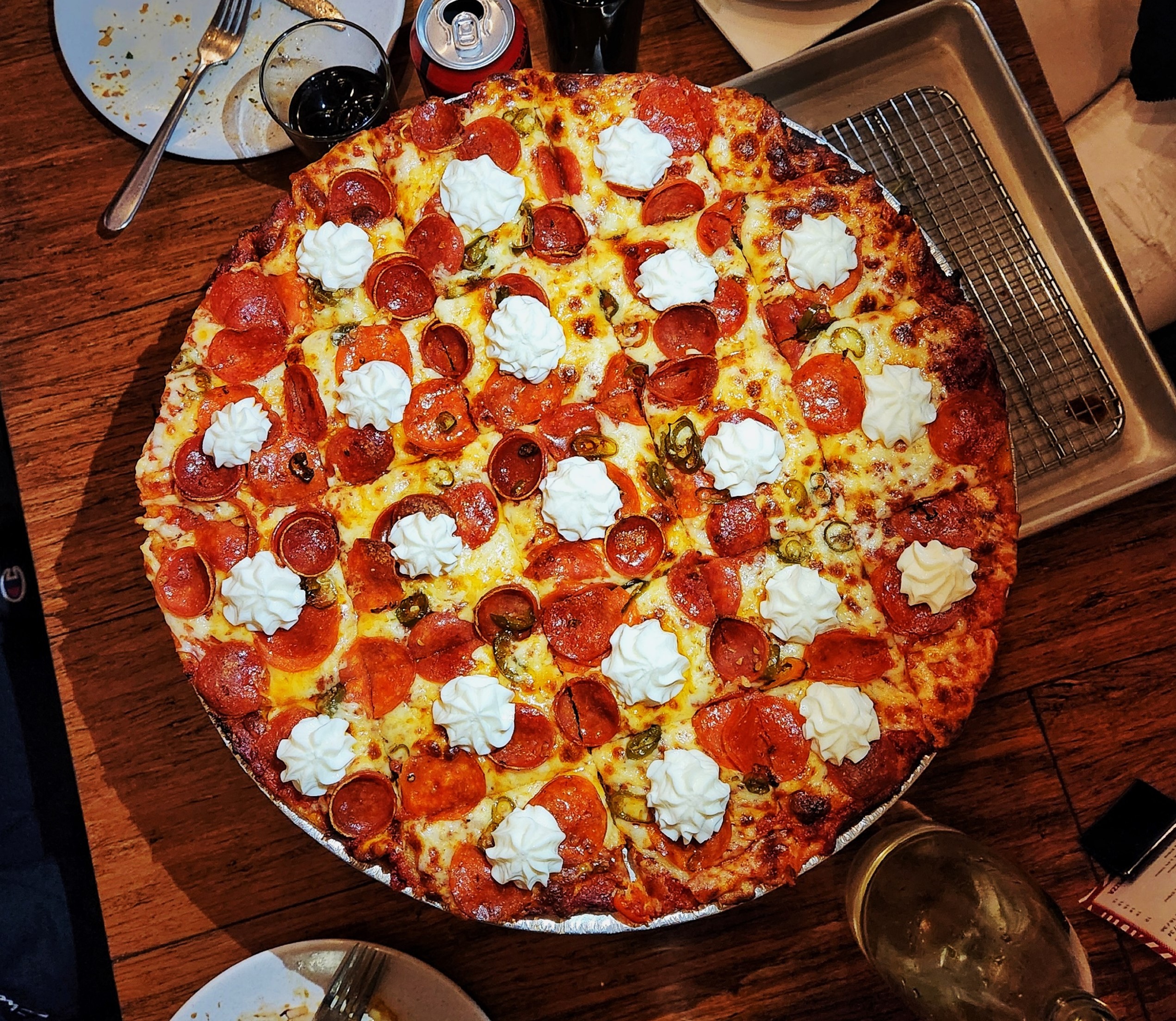
Photo Credit @hangrymaz
When guests ask why our Chicago Tavern Style looks and tastes so different from "thin crust" pizzas they've had elsewhere, they're witnessing the result of very different dough formulation and handling. Most "thin crust" pizzas are just regular pizza dough stretched thinly.
"Tavern style requires a different dough, different technique, and different mindset entirely".
The Days-Long Journey
Our Chicago Tavern Style doesn't begin when you order—it begins at least three days earlier.
Day One: The Foundation
We start with a specific dough formula designed for compression, not expansion. Unlike traditional pizza dough that's optimized for hand-stretching and air bubble development, tavern style dough requires mechanical rolling
The Science: Lower hydration than traditional pizza dough, softer flours, higher fat content, and long, controlled fermentation that develops flavor without creating excessive elasticity.
Day Three: Lamination
Here's where tavern style diverges completely from traditional pizza. For each base, we first roll out three individual buttery doughs before layering them together with more butter, par-baking, and cutting to size.
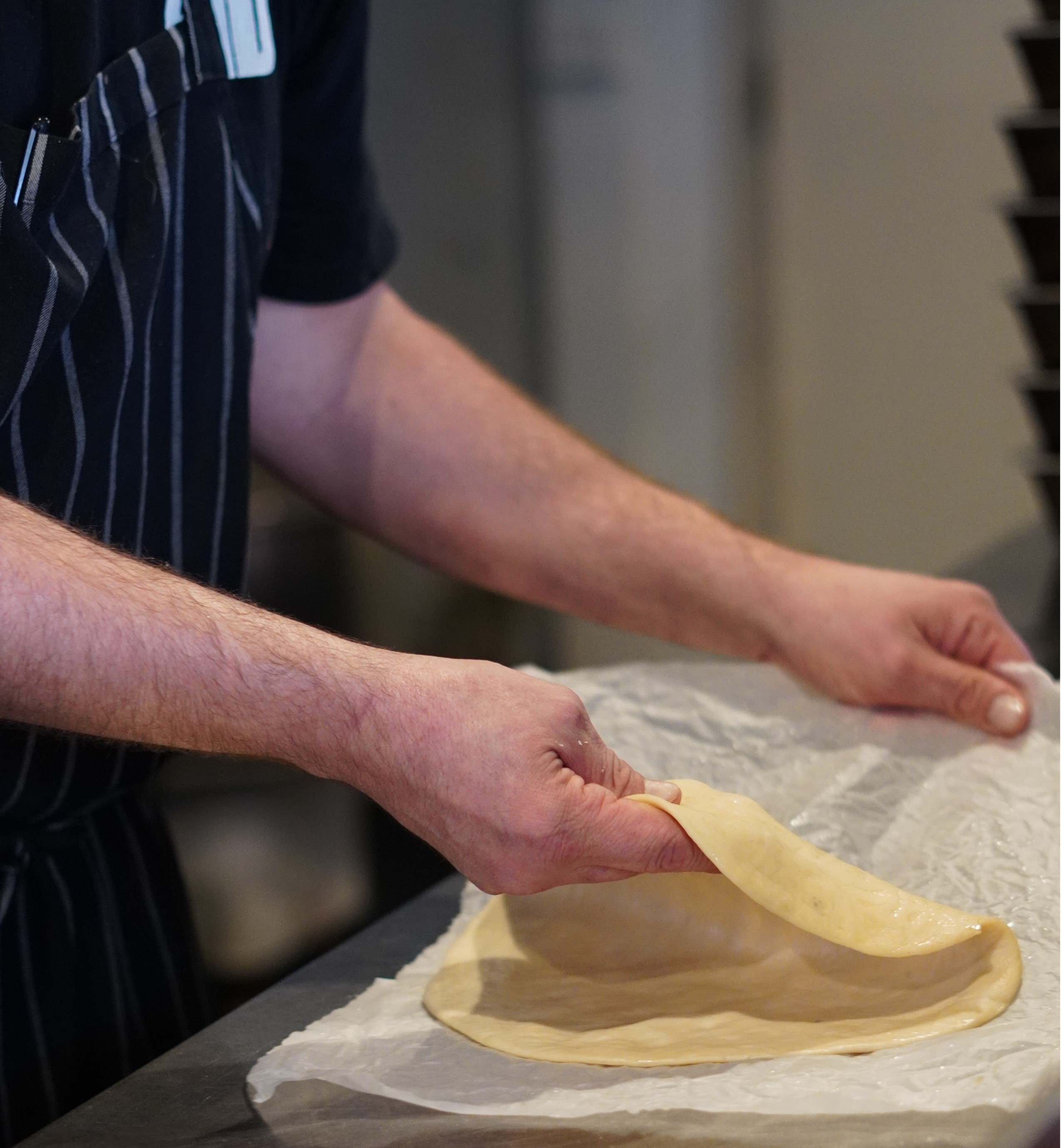
Photo Credit: Hayden Dib
Why Butter Layers Matter: The butter creates distinct layers that separate during the bake, contributing to the final texture and that characteristic "crunch".
The Rolling Revolution
Why We Roll, Never Stretch
Traditional Pizza Dough: Hand-stretched to preserve air bubbles, creating a chewy, airy texture with natural variations in thickness.
Tavern Style Dough: Mechanically rolled, creating uniform density and that signature cracker-like texture.
The Sheeting Process
A dough sheeter is essentially a large pasta machine for the production of laminated pastries—two motorized rollers that compress dough through progressively smaller gaps to achieve precise, uniform thinness impossible with hand techniques. This mechanical process allows the layering of dough and fat, and creates consistent thickness across the entire surface.
The Deep End Reality: We don't have a sheeter yet. As a little family restaurant, we simply don’t have the funds or the space to invest in this kind of equipment.
The Square Cut Science
Historical Functionality
The famous square cut isn't just tradition—it's a simple bit of problem solving that dates back to 1940s taverns in Chicago.
The Tavern Problem: Bars didn't have plates, only napkins. Big slices from round pizzas were more messy and difficult to eat one-handed while drinking beer.
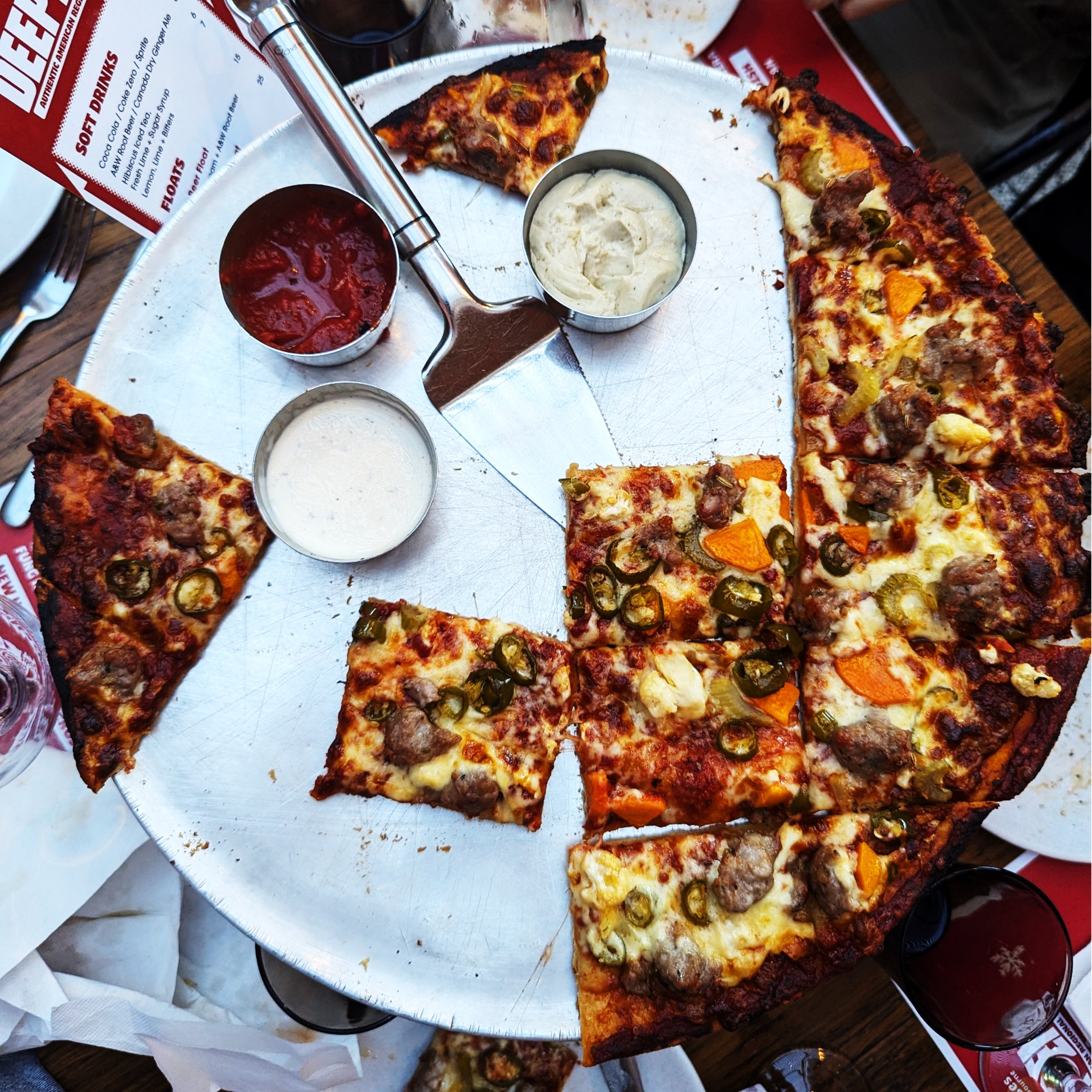
Photo Credit: @tightarseofmelbourne
The Solution: Square cuts created manageable pieces that could be eaten off napkins without dripping, perfect for the tavern environment where this style originated.
The Corner Piece Phenomenon
Why Corners Are Coveted:
- Highest crust-to-topping ratio
- Maximum crunch
- Best demonstration of the cracker-crisp texture
- Optimal one-or-two bite eating experience
The Mathematics: A 15-inch round pizza cut into squares creates four little corner pieces with the perfect balance of crust support and topping distribution
The Deep End Technique
Our Rolling Station
In the absence of $10k for a decent sheeter and a separate room just to produce the one dough, I've developed a hand-rolling technique that achieves authentic tavern style results. It's significantly more labor-intensive than machine sheeting, but it means every single tavern style pizza gets personal attention and precise hand-work. The technique requires hard work, patience and skill to achieve the uniform thickness and density that defines authentic tavern style—it's old-school craftsmanship until we have the space and funds.
Temperature Control
Every step of our process is temperature-controlled:
- Fermentation: Precise cold temperatures for 72 hours
- Rolling: Room temperature dough for optimal handling
- Baking: High heat for rapid crust setting
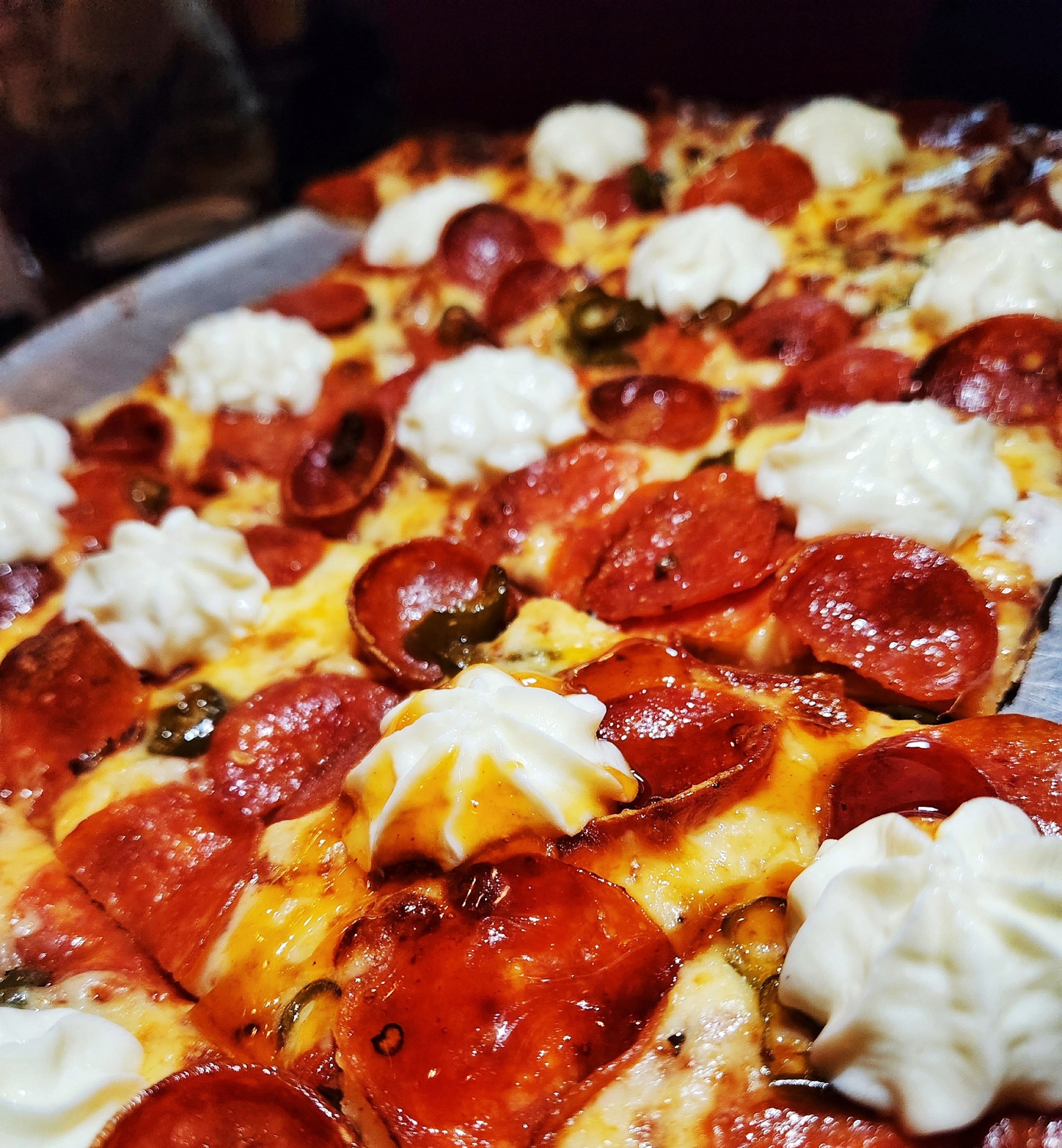
Photo Credit @hangrymaz
Limited Daily Production
Why we can’t make enough to offer for takeaway and sometimes run out in-house later in the evening:
- 72-hour lead time means production planning three days ahead
- Each batch requires hands-on attention
- Time and bench space for manual rolling limits how many we can prepare each day
- Quality demands small-batch attention
Innovation Within Tradition
Our three-layer butter technique results in a unique mix of qualities from our favorite spots in Chicago for thin crust pizza. We’ve combined the rich, buttery crust of Pizano’s with the layering of Vito & Nick’s, the enduring crispness of the cured dough method from Pat’s, and the bit of char on the base and around the rim you get from those old-school rotary steel deck ovens.
The Deep End Technique
Mastering tavern style technique means understanding that this isn't just thin pizza—it's a completely different approach to pizza construction that serves a specific cultural function.
The rolling, the layering, the timing—every element serves the ultimate goal of creating Chicago's true neighborhood pizza.
At Deep End Pizza, being the first in Australia to master this technique means more than just offering something new.
It means preserving and sharing a craft that represents the authentic heart of Chicago's pizza culture—one perfectly engineered, cracker-crisp square at a time.
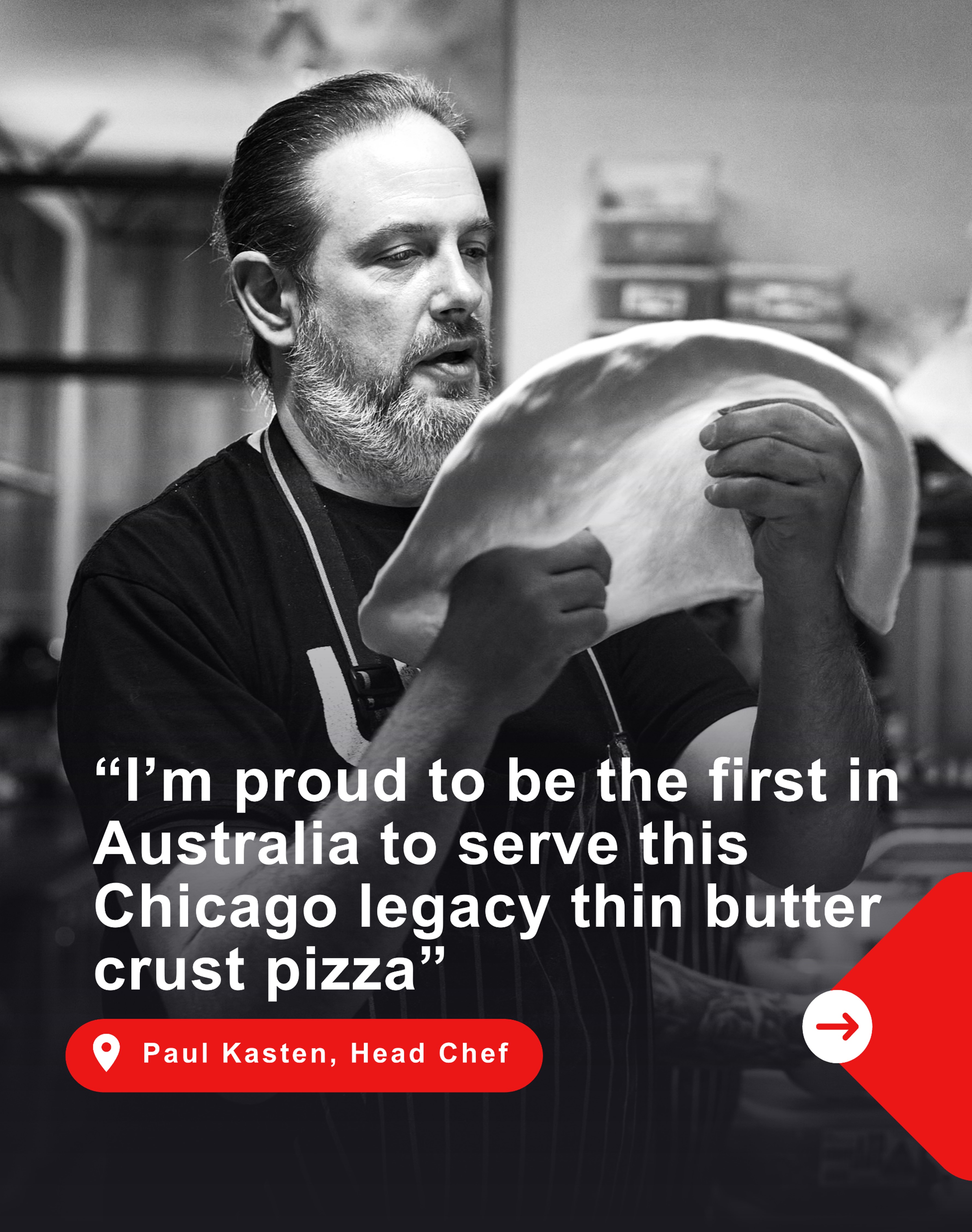
Want to learn more about the legendary Chicago pizzerias that perfected these techniques? Read my complete breakdown in "Chicago's Best-Kept Secret - Tavern Style" for the full story of the masters who created this uniquely American pizza tradition.


